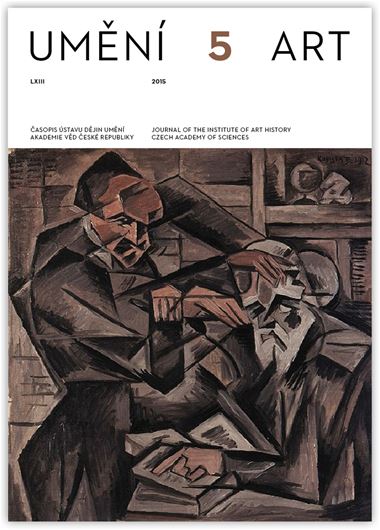Petra Zelenková — Libor Šturc
Z protestantského teologa strahovským premonstrátem. Podobizna Andrease Fromma (1621–1683) od Karla Škréty mladšího
František Martin Pelcl’s well-known work Abbildungen böhmischer und mährischer Gelehrten und Künstler (Prague 1773–1782) contains biographies of various artists, scholars, and other personalities, and among them there is also a profile of the once famous German theologian and Catholic convert Andreas Fromm (1621 Plänitz – 1683 Prague). In his time Fromm was an iconic figure in the religious disputes that existed amongst Protestants and those between Protestants and Catholics. After a spiritual quest that lasted many years, and disgusted by the conflicts within the Protestant Church, he moved to Bohemia. In 1668 he and his entire family converted to the Catholic faith in Prague and the next year he was ordained as a priest. For the next more than a decade he was involved in the administration of the church in the diocese of Litoměřice. He spent the final years of his life at the Premonstratensian monastery at Strahov in Prague, which two of his sons also joined.
Two painted portraits of Andreas Fromm have been preserved in the collection of the Royal Canonry of Premonstratensians at Strahov. The first portrait is the hitherto work of Karel Škréta the Younger from 1681–1683. The name Škréta is presented on the back of the canvas. That Škréta was the author is also confirmed by the signature on a graphic portrait of Fromm in Abbildungen, which has hitherto been overlooked or read incorrectly (as ‘Screler’). The oeuvre of Karel Škréta the Younger, knowledge of which is still incomplete, has thus been enriched by the identification of this first wholly indisputable work. The second portrait, preserved in the Royal Canonry at Strahov, is the work of the Strahov conventual and painter Siard Nosecký (1693–1758). The authors also describe the print portraits of Andreas Fromm that illustrate his publications and provide an interpretation of the interesting allegorical frontispiece to Fromm’s most influential work, in which he outlines the history and motives of his conversion – Wiederkehrung zur Catholischen Kirchen (Prague 1668). The article presents Fromm as one of the most interesting figures of the era of internal conflicts among Protestants and during the reassertion of Catholicism in Bohemia. While Fromm has received attention from German scholars, he has so far been unjustly overlooked in Czech historical research.
Full-text in the Digital Library of the Czech Academy of Sciences:
https://kramerius.lib.cas.cz/uuid/uuid:42227550-a4fe-43bd-8c7e-6ff238fc3924
< back

